Still only 39 years old, Carlos Corberán has been all over the world already in his coaching career. He started his managerial career with two stops in Cyprus before coming to England, where he made his name. The Spaniard was the manager of Leeds United’s U23 side for a spell, while at the same time being first-team assistant coach under former Leeds United manager Marcelo Bielsa.
Corberán then had a two-season spell in charge of EFL Championship side Huddersfield Town, guiding them to the playoff final last season in what turned out to be his final match in charge of the Terriers. After a brief one-month hiatus, he was back in management, taking over from Pedro Martins at perennial Greek powerhouse Olympiacos after disappointment in UEFA Champions League qualifying led to the Portuguese manager’s sacking.
However, Corberán has had a rather interesting start to life in Piraeus, with the reigning Greek champions four points off league leaders Panathinaikos at the early stages. Interestingly, in the Spaniard’s first nine matches in charge, Olympiacos have only lost once, but have drawn six times in all competitions. Corberán’s only loss has come in the UEFA Europa League group stage against Ligue 1 side FC Nantes. This tactical analysis piece will take a more detailed look at Corberán’s start to life in Greece, along with the tactics and philosophy he is trying to impose on the side in these early days.
Preferred formations
Though it is still early days for Carlos Corberán at Olympiacos, a trend is starting to develop in regards to what formation the Spaniard is leaning towards utilising with the players he has at his disposal.
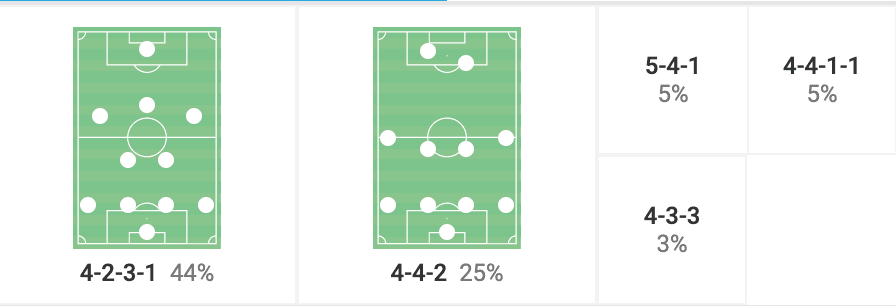
The graphic above shows the different formations that the manager has used so far in his first nine matches in charge. A back four formation is definitely the preferred choice for Corberán, with the 4-2-3-1 and 4-4-2 being similar and therefore used interchangeably during a match. It is still early, but it’s looking like the Spaniard is going to stick with the system that brought him success during his time in England with Huddersfield Town.
Defensively solid
Even though they may not be getting the results they are looking for at the current moment, the defensive structure that Carlos Corberán has implemented so far looks to be an astute one. Not counting European qualifying, since the Greek Super League has resumed and the European group stages have kicked off, the side from Piraeus have only conceded three goals in these matches. This section will take a look at the defensive shape of the Greek side, and why they are tough to break down at times for opposition.
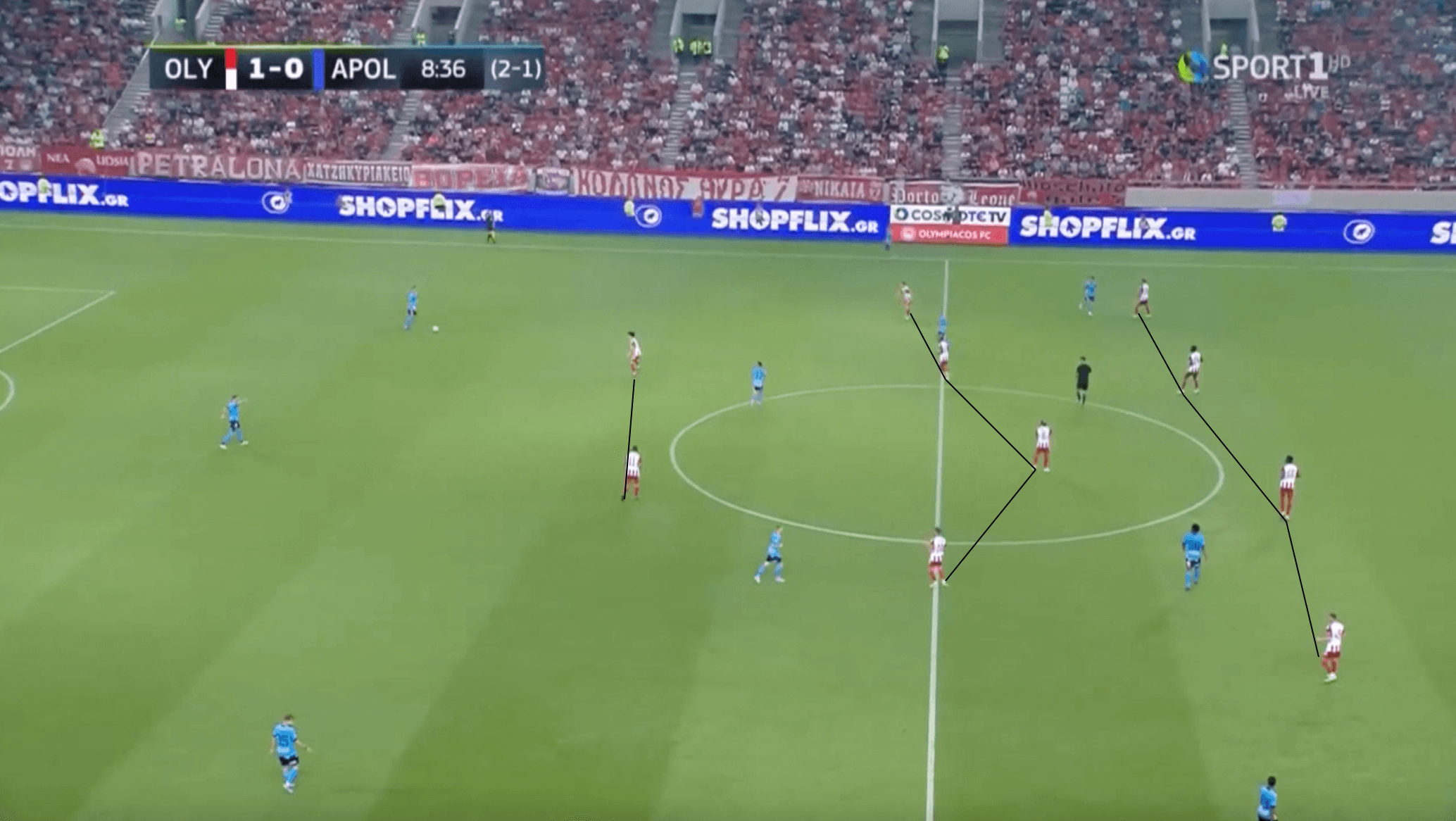
The image above shows a good example of the shape that Olympiacos look to defend in when in defensive moments. As the ball gets moved from side to side by the Apollon Limassol backline, the 4-4-2 shape stays intact, with the Olympiacos players shifting as the ball is being moved, but not stepping out to try and engage the player in possession. This passive defensive approach is not a constant theme, however, with Olympiacos’s PPDA being 7.14, the third lowest in the league.
With that being said, this 4-4-2 shape will often transition into a 4-2-3-1 when possession is turned over, but this astute defending forces opposition sides to attempt to play long, with it being unlikely for them to keep hold of the ball in these situations.
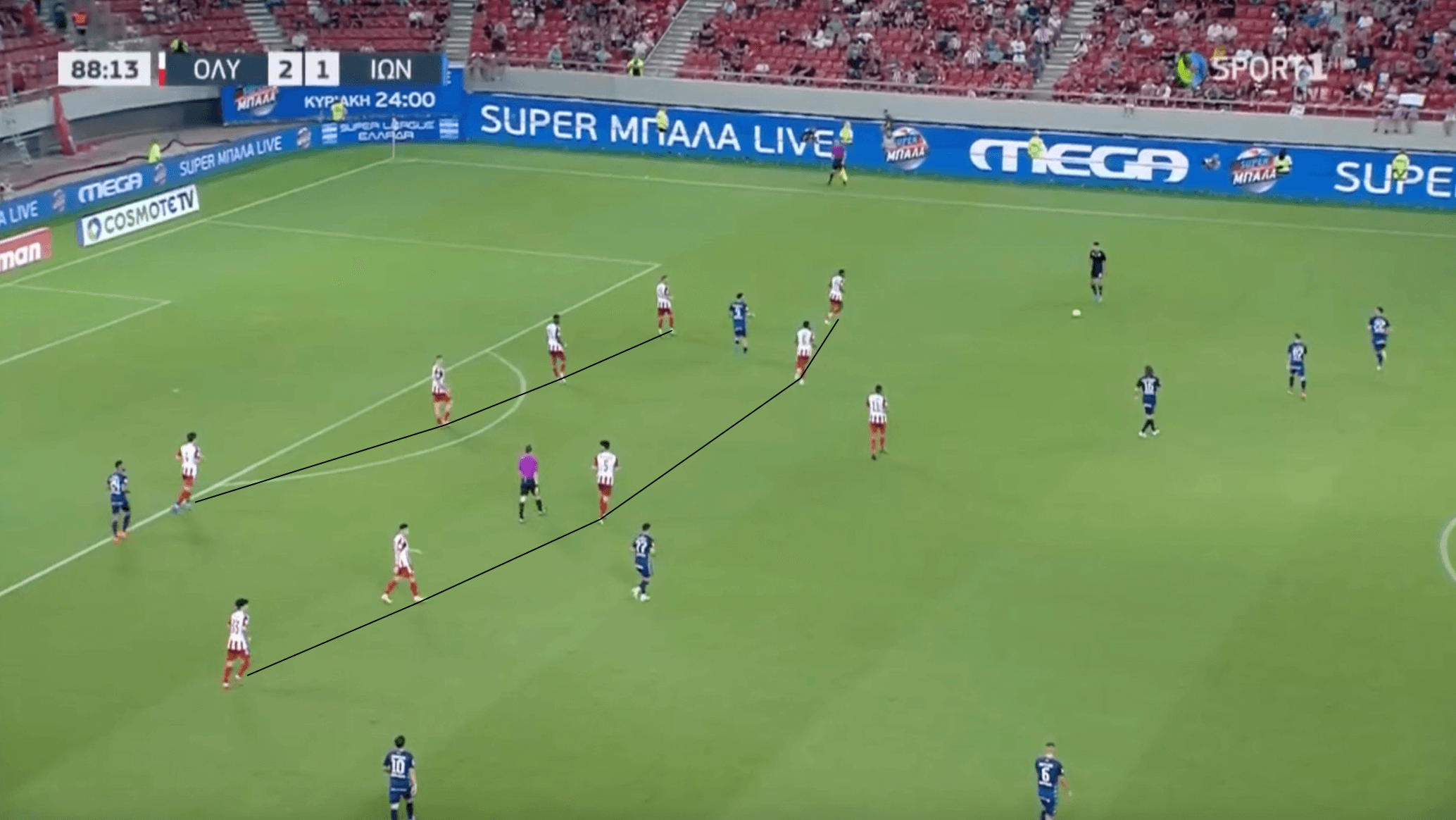
When trying to protect a lead, or being pushed back by an opponent’s attack, Corberán will not look for his Olympiacos side to keep a high line or press the player in possession. Instead, they will drop, forming almost a 4-5-1 defensive shape, while keeping all ten outfield players behind the ball. The defensive unit will stay tight and compact, allowing the opposition to attack the wings, which forces them away from the goal.
As this occurs, the fullbacks will step out and look to engage the wide player 1v1 in these channels, looking to regain possession. In this phase above, this is exactly what happens. As the ball is forced wide by Olymiacos’s compact defensive shape, the fullback steps out to engage the ball carrier. He wins possession back as a result, with the opposition winger also committing a foul in the process. Though this is not how Corberán wants his side to defend all the time, it is a strategy that is useful in certain situations, namely against bigger European opposition.
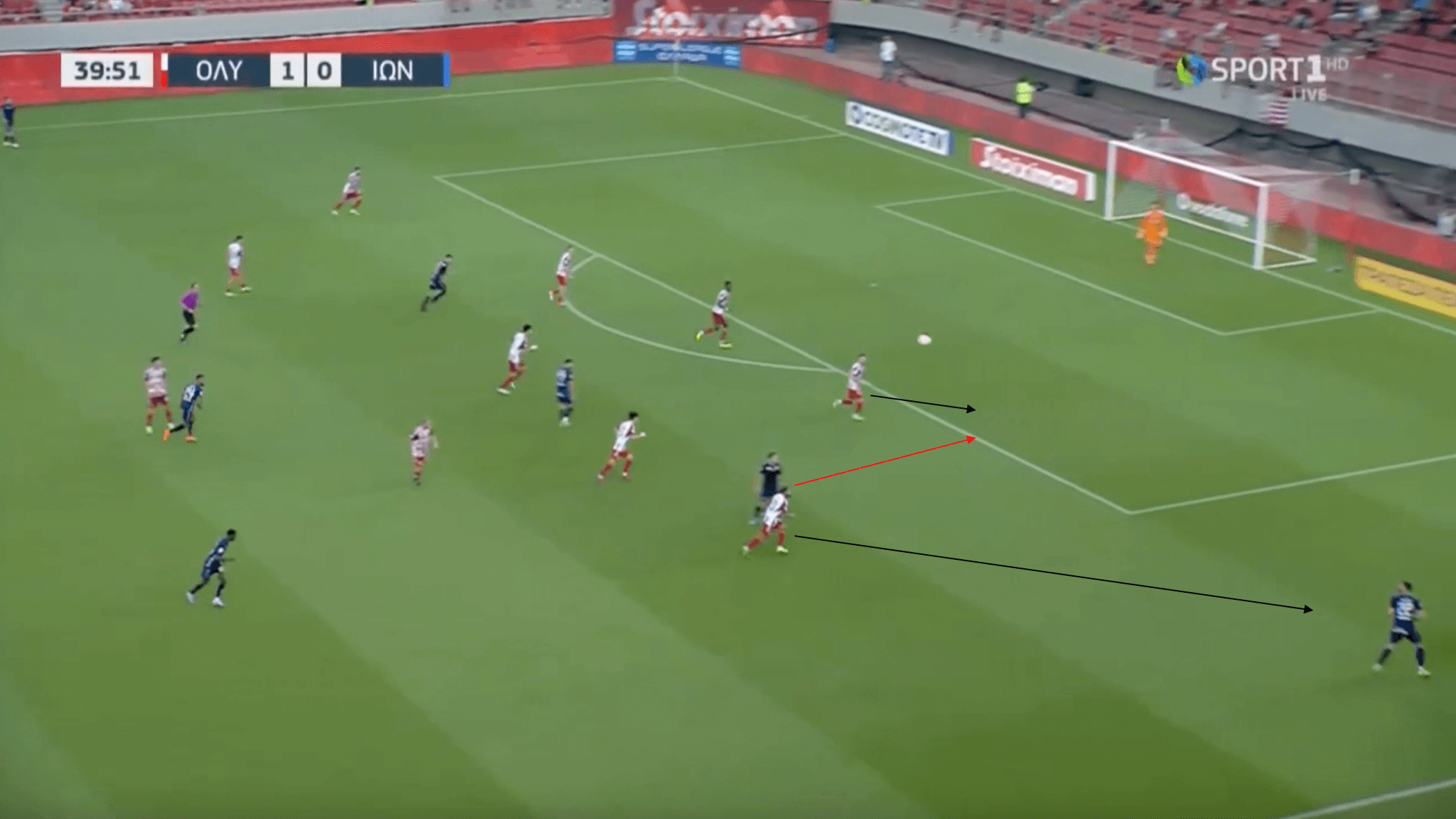
The image above once again shows the tight and compact shape of the Olympiacos defensive line when having to defend just in front of their goal. The Greek champions allow their opponent the space in the wide channels, as there is not nearly as much danger there as there is in the central spaces. As the ball is played out to the wide player, the wide midfielder looks to close him down, passing his man off to the fullback to prevent the quick short pass.
Notice also the overloads in these wider areas, with the Olympiacos defenders looking to outnumber the opposition attackers in the box. The ensuing ball is crossed in from the wide attacker but easily dealt with by the defenders, clearing any danger away for Olympiacos.
This defensive structure has proven to be strong for Carlos Corberán so far during his tenure with Olympiacos. Though they have not been able to manage many wins, or score many goals, as the next section will illustrate, with only three goals conceded since the start of the new league season, this defensive solidity is something that the Spanish tactician can rest his hat on.
Attacking with width to create overloads
In this 4-4-2 system, the main thing that Carlos Corberán looks for his side to do is play the ball into the wide attacker’s feet. This then allows them to cross into the box to create chances, with the Piraeus-based side having the highest number of crosses in the Greek Super League so far this season, 105. They also have the most touches in the penalty area of any side, with these mostly originating from these wide positions. Their main creative threat from these areas is 37-year-old Frenchman Mathieu Valbuena.
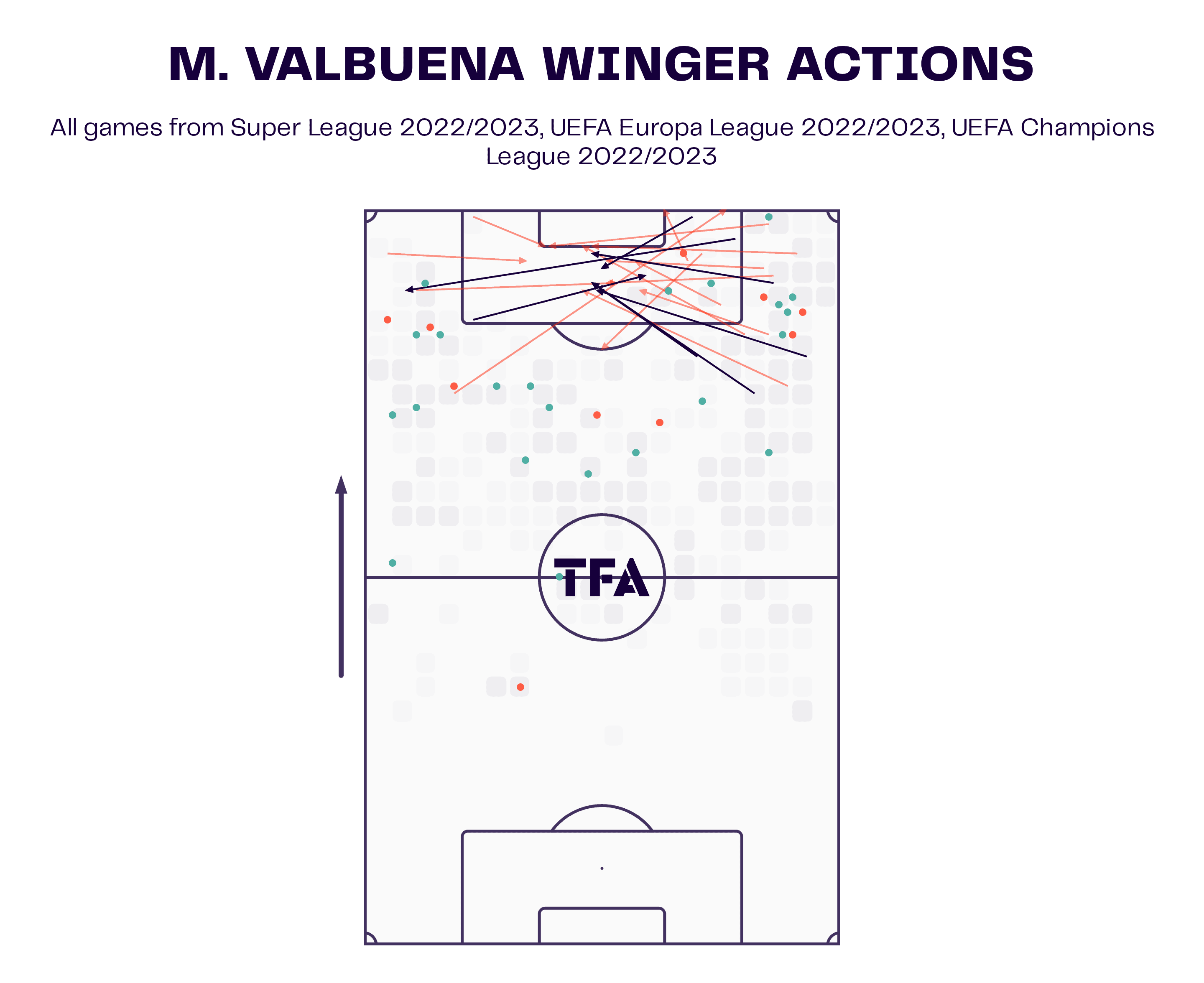
The data viz above shows the wide area actions that Mathieu Valbuena has either successfully or unsuccessfully completed this season. Notice how the crosses are plentiful, and while they do not always create chances directly, the second phase, or the second ball, is the most crucial for defenders to defend against. Olympiacos are one of the highest chance creators in the Greek league, and that is no coincidence, especially with the impact their wide players have during the attacking phases of play.
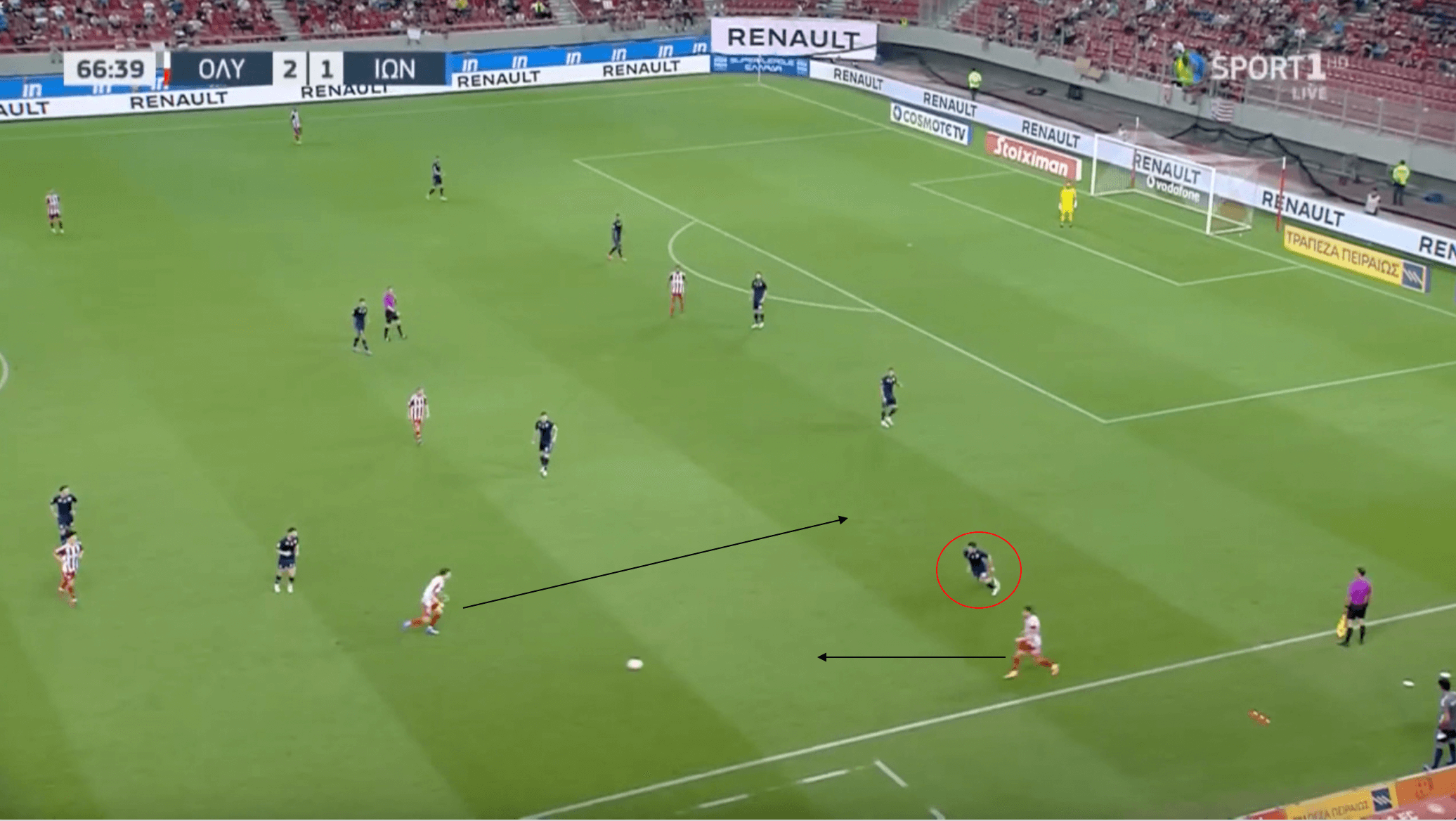
The image above shows an example of Corberán’s use of both the wide midfielders as well as the fullbacks. They look to overload the wide areas, with an illustration of this shown above. As the fullback plays the ball to the wide player, the opposition fullback has a decision to make. As the central defender will likely not step out of the backline, unless the midfielder slides over to mark the underlapping run of the fullback, he would be in behind the defence.
Unfortunately for Olympiacos, the winger is not able to get the ball back into the fullback’s path, but this is a prime example of the overload situations that the Spanish manager is looking to create in these wide channels.
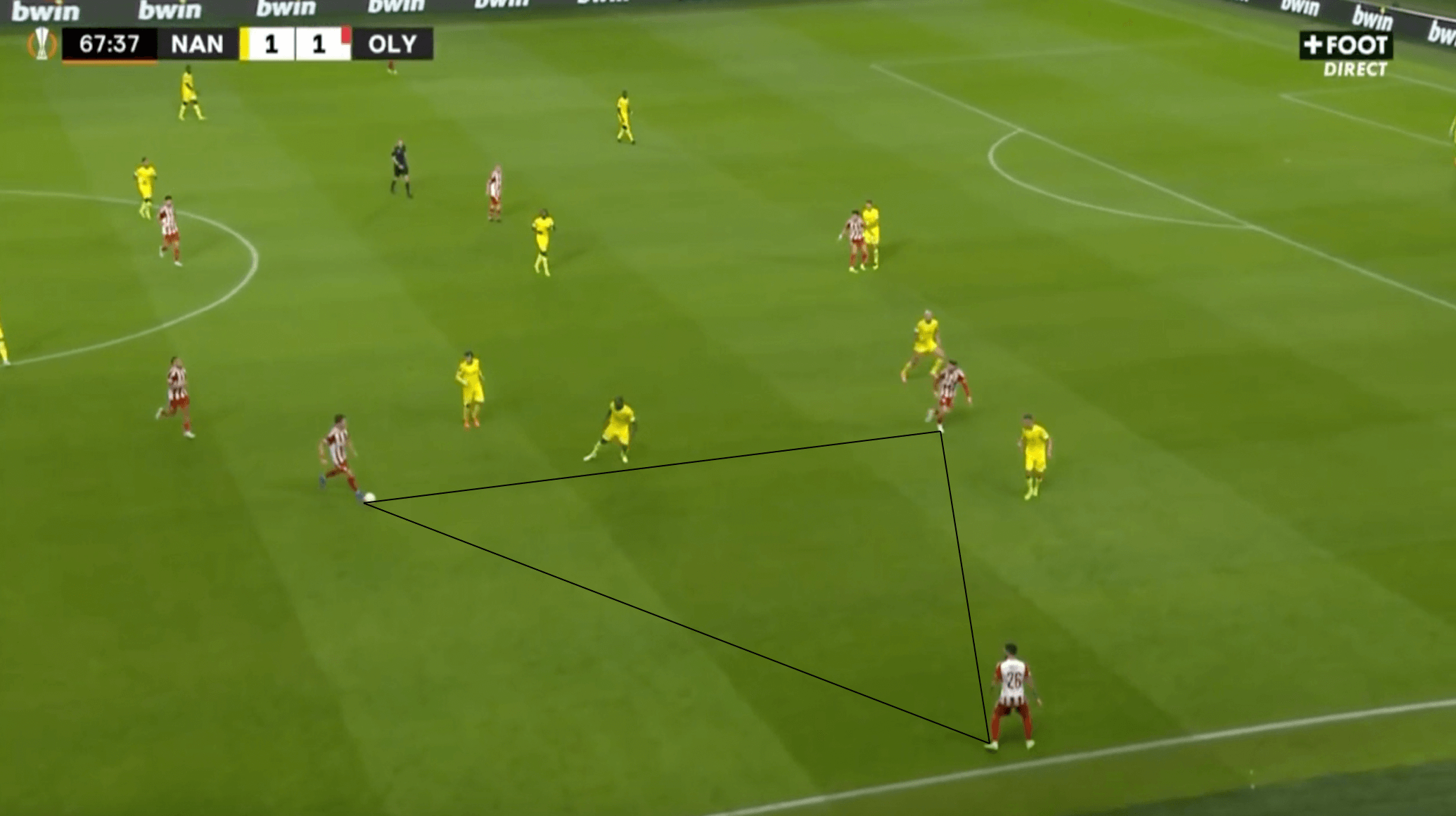
The image above from Olympiacos’s first Europa League group stage match against FC Nantes shows another great example of the use of width to create overloads in the wide channels.
After playing the ball between the back line, the Greek side then start to progress the ball positively. The two wide attackers stay pinned to the touchline, stretching the Nantes backline. As the ball progressed forward, Olympiacos are able to create an overload situation on the right flank. As the midfielder in possession moves into this zone, the players form a triangle, also creating a 3vs2 overload.
The eventual goal was for the ball to be played into the path of the forward who is making an in-to-out run in behind the opposition defence. Unfortunately, Nantes do a good job defending and eliminate this possible passing option.
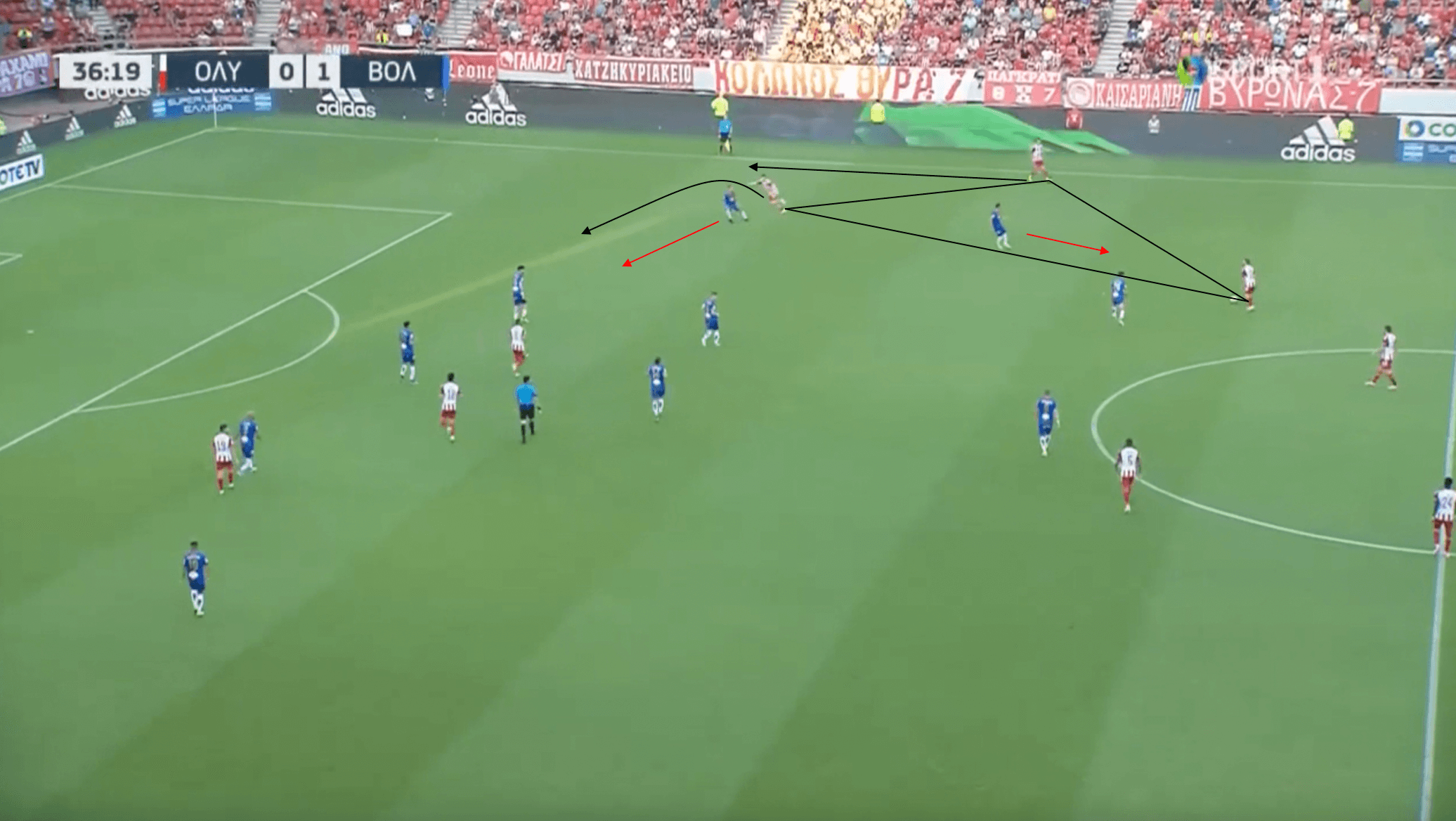
The final example for this section once again shows the overloads and movements that Olympiacos like to utilize in the wide channels. As we can see, a triangle is once again formed by the wide midfielder, the fullback, and the central midfielder in this wide right channel. It creates an overload, allowing the two wide players to become creative in creating space for each other.
As a result, the wide midfielder cuts inside and drives into the 18-yard box, which drags the fullback with him and opens the space up wide. The fullback then runs into this vacated space, allowing the pass to be played to him. This then results in a crossing opportunity for Olympiacos, and a goalscoring chance to be created.
As this section has shown, though the results have not quite been the best so far for Carlos Corberán’s side, there is an attacking foundation to build upon. The ability to create overloads in these wide channels, plus the impact that the wide players are having on the attacks so far this season, is a recipe for success for the Spanish manager in Piraeus.
Conclusion
As this tactical analysis and scout report piece has shown, Carlos Corberán’s tactics are still yet to be fully implemented in Greece. We have gone over the two key phases in this analysis, the defensive and attacking sides of Olympiacos’s game so far, with a few examples to back up the points that were made.
On the domestic stage, Olympiacos should go back to their best once Carlos Corberán has been able to fully imprint his philosophy on this team. The European stage is where he may have to prove himself a bit more. The Greek champions should be favourites in their group, with the possibility of facing sides like Manchester United and Arsenal should they progress.





Comments